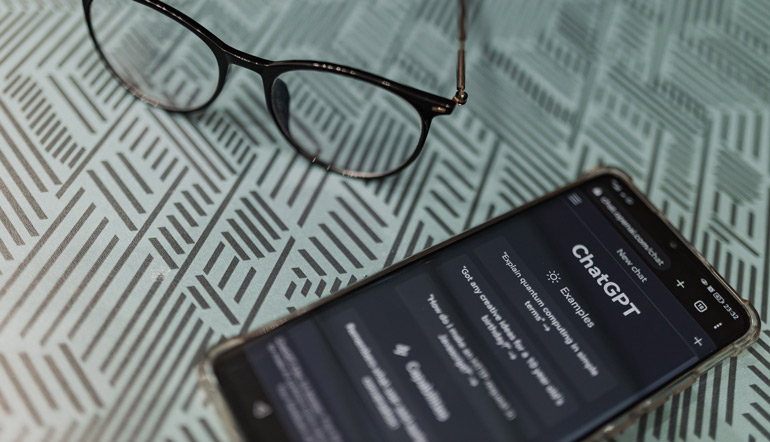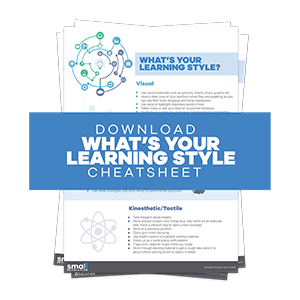When writing technology evolved from pen and paper, to typewriters, and to computers, writers were gauged by how well they collaborated with the developing technology.
In the same manner, today we have AI language models.
Failing to collaborate with AI language models in your blog writing process today is like using a typewriter when other writers are using computers.
ChatGPT is an AI language model that was launched less than a year ago, and it’s already helping us produce high-quality content.
Matter of fact, it is easy to use and useful when developing writing skills.
Small Revolution is committed to offering writing tips for bloggers. This is why we suggest jumping on this AI train as soon as possible.
We will show you how to:
- Prepare for collaboration with ChatGPT
- Collaborate with ChatGPT
- Refine your content with ChatGPT
Step 1: Prepare for Collaboration
Just like writers needed to understand the typewriter before using it, you also need to prepare yourself before collaborating with ChatGPT.
Preparing for blogging collaboration involves being aware of your writing style, preferences, and goals. These are the most important creative writing aspects for bloggers.
- Your writing style is the way you express yourself through writing. It includes factors like tone, voice, sentence structure, and grammar.
For example, you may prefer a formal or informal style depending on the subject matter and audience.
- Writing preference refers to the topics you enjoy writing about, the length of your blog posts, and the frequency with which you publish content. Knowing your preferences will help you tailor your blog according to your interests and the reader’s preferences.
For example, Small Revolution prefers to write blog articles about e-commerce and copywriting, that are between 1000 and 2000 words.
- Goals can include reaching a particular audience, promoting your brand, sharing opinions, or earning revenue. Having clear goals will help you measure your success when writing from home.
The moment you understand what you need as a blogger, the next step is communicating those needs with ChatGPT for writing process improvement.
Communicating With ChatGPT
ChatGPT uses natural language processing (NLP) to understand your intentions and generate appropriate responses.
You may have interacted with natural language processing in voice-activated GPS systems, digital assistants, or speech-to-text dictation software. What they all have in common is that they are always simple, direct, and specific.
This is the same way you should interact with ChatGPT. Phrase your requests in a simple, direct, and specific manner.
The table below shows the phrasing you can use as blogging tools for collaboration and their expected outcomes:
| Activity | Phrasing | Expectation |
| Content generation |
| It will provide you with content about your topic that matches the niche of your blog |
| SEO writing |
| It will suggest the best way to include keywords in your blog post for content marketing |
| Product review |
| It will provide a detailed review of your product |
| Proofreading |
| It will identify all the errors in your text and correct them |
| Summary |
| It will generate a summary that captures the main ideas of your blog |
Effective communication with ChatGPT does not guarantee you will get everything you want.
There are some blogging aspects that AI can not accomplish.
This is why you need to set the right expectations before collaborating with ChatGPT.
Setting Expectations
Here’s what we mean; you need to be clear about what you expect from ChatGPT and its capabilities.
ChatGPT offers a range of outputs, from topic ideas and outlines to long-form content and editing. But it has its limits.
Setting realistic expectations guarantees that you will always operate within its limits.
Some of the limits you should know when collaborating with ChatGPT include:
- Quality Assurance. Even though ChatGPT can generate text that sounds natural and coherent, it may still produce errors, inconsistencies, or irrelevant information. Therefore, you should always review and edit the generated content to ensure its accuracy, relevance, and quality.
- Originality. ChatGPT can generate content that resembles human writing. However, it is not able to generate entirely original content or ideas. There is a risk that the text generated could resemble existing content. This will affect the uniqueness of your blog.
- Understanding context. ChatGPT could fail to understand the context, tone, or purpose of your blog. This is why you should know your writing needs. Always complement ChatGPT’s output with Small Revolution’s writing course for bloggers to add context.
- Ethical considerations. ChatGPT will not consider ethics when creating content. Fortunately, Small Revolution shows you how to blog ethically.
Use our tips to ensure that your content adheres to ethical and legal standards, respects intellectual property rights, and does not propagate harmful or discriminatory content.
After understanding your own writing needs, how to communicate with ChatGPT, and how to set expectations, you can now collaborate with ChatGPT to develop content creation strategies.
Step 2: Collaborate With ChatGPT to Create Content
ChatGPT can help you with every step of content creation. From the moment you think about the type of content you want to write, to the type of words you want to use, to checking for errors.
It accomplishes this by combining relevant keywords to come up with content ideas that match the niche of your blog.
On your part, you need to follow these steps to collaborate with ChatGPT:
- Brainstorm. Simply give ChatGPT a broad topic or a keyword related to your niche and it will provide you with a list of relevant topics to write about.
- Outline. Once you choose a topic, provide ChatGPT with the main points you want to cover and it will help you create an outline that you can use as a starting point for your blog post.
- Write. With a topic and an outline, ChatGPT will help you generate paragraphs that you can use as starting points. The amount of content it will produce depends on what you demand.
- Edit. Finally, ChatGPT can help you edit your blog post. Just provide suggestions for improving your writing. It can also help you with grammar and spelling checks.
Now, this is important, ensure you follow Small Revolution’s blog writing steps to craft unique and relevant content for your audience. ChatGPT may be good at generating content, but you are the only one who knows your audience best.
Apart from creating content, you can collaborate with ChaGPT for other blogging activities:
- SEO writing. Follow Small Revolution’s suggestion for choosing valuable keywords for your blog. After that, input the suggested ChatGPT communication phrases to optimize your blog using the keywords. You can also ask ChatGPT for suggestions on how to use subheadings, headings, and other formatting options to enhance the readability of your blog post.
- Product review. If you provide ChatGPT with the details of a product, it can generate a review that is informative, engaging, and objective.
- Summary. If you prefer to write your blog articles yourself, you can use ChatGPT to generate summaries for your blog post. Simply input the text alongside a ‘summarize this text’ prompt, and it will generate a summary that captures the main ideas of the content.
The next time you experience writer’s block or feel like you need writing inspiration, use ChatGPT as a blogging tool to increase your blogging productivity.
Step 3: Edit and Refine With ChatGPT
Editing and refining are crucial, yet time-consuming aspects of writing.
Fortunately, ChatGPT can save you time.
You can use the proofreading prompts we provided and ChatGPT will identify all the errors and suggest corrections. However, checking for individual errors is more efficient.
When you follow the suggestions below, you will be able to check the grammar, syntax, and sentence structure of your content.
- Grammar and spelling. Simply input the prompt; “proofread grammar and spelling in the below text and list all the changes you made:”, and paste your content after the prompt. It will analyze the text and highlight all the errors, providing suggestions for correcting them.
- Syntax analysis. Input the prompt; “Check the syntax of the below text and provide improvement suggestions:”. When you paste your content below this prompt, ChatGPT will provide feedback on how you can improve the syntax.
- Sentence structure improvement. When you want to improve the structure of your sentences, simply input the prompt; “How can I improve the below sentence structure:”, and add your content below the prompt. ChatGPT will provide suggestions on how to make your writing more engaging and easier to read.
With these features at your disposal, you can refine your blog’s language and ensure that it is clear, concise, and easy to understand.
It’s also crucial to recognize that ChatGPT does not replace the need for human editing. While it can catch many mistakes and offer suggestions, it cannot account for the nuances of language and tone that only human writers can provide.
So while ChatGPT is a helpful assistant, it’s still up to you to ensure that your content is polished and professional.
Despite these limitations, collaborating with ChatGPT for editing and refining can guarantee your blogging success.
Enhance Your Blog with a Collaboration Partner
Collaborate with ChatGPT and enhance your blog writing process by using its advanced features for content creation and editing.
You can implement all the blogging ideas suggested by Small Revolution with ease as you work from home as a writer.
We encourage you to try ChatGPT for yourself and experiment with different ways it can assist you in your writing.
With clear goals, effective communication, and the right approach, ChatGPT can be a valuable asset that saves time, improves quality, and enhances your blog’s overall performance.


